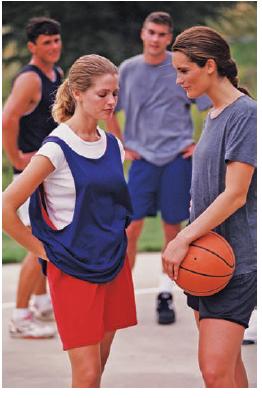1. Research the success of Title IX in eliminating disparity in gender in collegiate sports programs. 2....
Question:
1. Research the success of Title IX in eliminating disparity in gender in collegiate sports programs.
2. Should Title IX standards be applied to the areas of the hard sciences mentioned above. Why or why not?
Title IX of the Education Amendments of 1972 to the Civil Rights Act of 1964 foreshadowed fundamental change in federally supported educational institutions. It read, “No person in the United States shall, on the basis of sex, be excluded from participation in, or denied the benefits of, or be subjected to discrimination under any educational program or activity receiving federal assistance.” The Office of Civil Rights (OCR) of the federal government’s Department of Education set down a three part test to determine if a violation of Title IX existed. Colleges that receive federal assistance could prove compliance with Title IX if they (1) had substantially the same proportion of male and female athletes as males and females in the general student population, (2) had a “history and continuing practice” of expanding opportunities for women, or (3) were “fully and effectively accommodating the interests and abilities of women on campus.” The ambiguity of the latter two criteria was seemingly intended to cover any decision that could be said to have been based on a simple quota-type proportional disparity. The result was a perfect record against court challenges by male teams and team members dropped by colleges to try and achieve compliance with the standards. In fact, in the 1990s, for every woman who was newly provided an opportunity to play organized collegiate sports, 3.4 men had that chance taken from them. Especially hard hit were the wrestling programs.
In the case of Amy Cohen v. Brown University, the decision came to turn on statistics and quotas. Cohen and others had sued to stop Brown from demoting women’s volleyball, women’s gymnastics, men’s water polo, and men’s golf teams from university-funded varsity status to the status of solely donor-funded teams. The federal appeals court in deciding the case found that Brown supported 12 men’s and 13 women’s teams in the funded, varsity status. However, the University had a 13 percent disparity between the percentage of women in varsityfunded sports and the percentage of women in the student body. It also found that, even though the number of female teams exceeded those of the male gender, the actual playing positions in the various sport offerings was heavily biased in favor of the men’s programs, 479 to 312. Mainly as a result of these statistics, the court enjoined (prohibited) the demotion of the women’s teams but did not halt the same action being taken against the male teams. As a consequence, since Cohen v. Brown the emphasis on comparative statistics in colleges and in the OCR administration has grown. To the shock of many, OCR recently has considered turning its attention to the male-dominated educational programs in math and science and, in particular, the hard sciences of engineering, physics, and computers. Investigations were threatened into the treatment of women as undergraduates, graduates, and faculty members in those areas. In fact the head of the OCR promised to not look exclusively “at the numbers” but at the environments in these areas that made women feel “unwelcome.”
Should comparative statistics be the primary indicator of gender bias in education?
Brown was enjoined from demoting the status of subject women’s programs.

Step by Step Answer:






